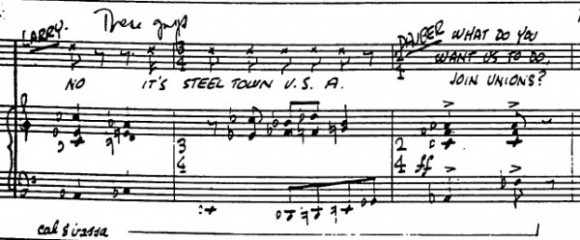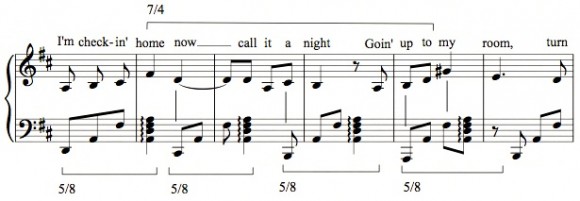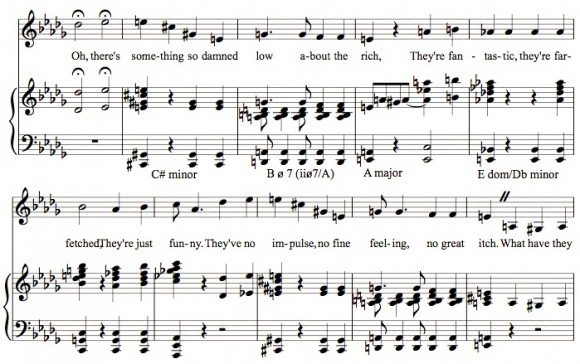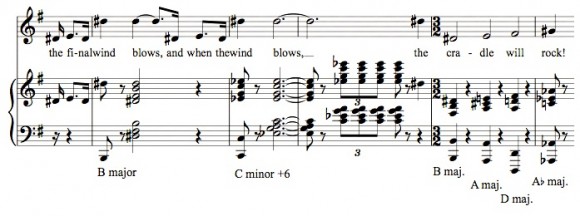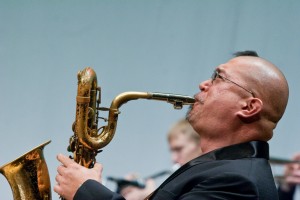I’ve mentioned before that Howard Boatwright, who edited the 1962 edition of Ives’s Essays Before a Sonata, missed or misidentified the sources of many of Ives’s quotations. In consequence he mentions that Ives gets a lot of his quotations wrong, or carelessly paraphrases them, but it’s not as true as Boatwright thought – he just couldn’t locate them all, and sometimes he would find a passage on the same topic and claim Ives paraphrased it. I fully sympathize with the difficulty of finding all these quotations, but it’s regrettable that Boatwright, in effect, blamed Ives for his failures, for his false assessment – “scarcely a quotation in the entire book is exactly like its source” – has been repeated in book after book and even taken as evidence of Ives’s disordered state of mind. Today, luckily, we have Google and Google Books and Open Library, and other resources that make it a hell of a lot easier, and it turns out that Ives was more punctilious than we thought. So here, as a public service, are the sources of the quotations I’ve found so far which aren’t correctly identified in the published edition. I’m grateful to musicologist and minimalism-conference chum Maarten Beirens for painstakingly locating the two French texts for me, which I dare not take it upon myself to translate with my three years of high-school French. You may amend your footnotes accordingly, as I’ve been doing:
Pp. 11-12: …whose heart knows, with Voltaire, that “man seriously reflects when left alone, and who would then discover, if he can, that “wondrous chain which links the heavens with earth – the world of beings subject to one law.†These are not loose paraphrases of Emerson, but closely taken from Voltaire’s poem “On the Nature of Man,†in The Works of Voltaire Introductory and Biographical (Paris, London, New York, and Chicago: E.R. DuMont, 1901), p. 295:
Thought is to those who live in crowds unknown,
We seriously reflect when left alone.
With thee I fain would soar on wisdom’s wing
From this vile world to its Eternal King.
That wondrous chain discover, if you can,
Which links the heavens with earth, with angels man:
That world of beings subject to one law,
Which Plato and which Pope in fancy saw.
P. 13: He measured, as Michel Angelo said true artists should, “with the eye and not the hand” – Emerson, VI. “Behavior” from The Conduct of Life (not V, as Boatwright writes).
P. 13: “soul-confusing labyrinths of speculative radicalism” – Carlyle, Sartor Resartus, Book 3, Chapter 7
P. 15: “what is best written or done by genius in the world, was no one man’s work, but came by wide social labor, when a thousand wrought like one, sharing the same impulse” – Emerson, “Shakespeare, or, The Poet,” from Representative Men.
P. 15: “Every thinker is retrospective” – Emerson, “Shakespeare, or, The Poet,” from Representative Men.
P. 20: “unsatiable demand for unity, the need to recognize one nature in all variety of objects” – Emerson, “Thoughts on Modern Literature,” not paraphrased from “The Sovereignty of Ethics.”
Pp. 20-21: “Draw if thou canst the mystic line / Separating his from thine / Which is human, which divine” – Emerson, “Worship” in The Conduct of Life
P. 22: “Nature loves analogy and hates repetition” – Emerson, “Education”
P. 27: “Melodious poets shall be hoarse as street ballads when once the penetrating key-note of nature and spirit is sounded, — the earth-beat, sea-beat, heart-beat, which makes the tune to which the sun rolls, and the globule of blood, and the sap of trees” – Emerson, “Swedenborg,” in Representative Men (Ives does misquote it a little, beginning “All melodious poets…”).
P. 74: “The staging to him (Hugo) was the important thing – not the conception – that in de Vigny, the artist was inferior to the poet”; finally that Hugo and so Wagner have a certain pauvrete de fond” – Faguet, Dix-Neuviéme Siécle: Études Littéraires (Paris: Lecène, Oudin et Cle, Éditeurs, 1890), p. 145: “Il me semble que tout cela revient à dire que dans Vigny l’artiste est inférieur au poète, le metteur en oeuvre inférieur au créateur d’idées poétiques. C’est une banalitè que de remarquer que dans Hugo la mise en oeuvre l’emporte infiniment sur la conception, voile parfois magnitique une certain pauvreté de fond. C’est just le contraire chez de Vigny. Il a des idées poétiques qui aboutissent mal; il en a qui n’aboutissent pas.”
P. 77: “”an infinite source of good…the love of the beautiful…a constant anxiety for moral beauty” – Francois Roussel-Despierres, L’Idéal esthétique, esquisse d’une philosophie de la beauté, Paris, Alcan, 1904, p. 41: “La beauté est une source infinie de bien. L’amour du beau, le souci constant de la beauté morale, forment le plus puissant ressort de la moralité pratique.” https://archive.org/stream/lidalesthtiquee00desgoog#page/n10/mode/2up
P. 78: “What you are talks so loud, that I cannot hear what you say” – from Emerson, Letters and Social Aims; he actually wrote, “What you are stands over you the while and thunders so that I cannot hear what you say to the contrary,” but it had commonly become misquoted even by Ives’s day.
P. 95: “It matters not one jot, provided this course of personal loyalty to a cause be steadfastly pursued, what the special characteristics of the style of the music may be to which one gives one’s devotion.” Daniel Gregory Mason, “The American Musician,” published in The Outlook; not paraphrased, as Boatwright avers.
P. 96: “He should never fear of being called a highbrow – but not the kind in Prof. Brander Matthews’ definition.†That definition is not the one Boatwright attempts. In the New York Times for March 5, 1916, Matthews is quoted as defining the highbrow as “a person who has a habitual attitude of contempt toward that which is popular, and also as a person who, generally, is educated beyond his intelligence.
“But,†continued Professor Matthews, “the highbrow has not been educated enough to know that in all the arts the really good things, the vital things, have always been popular. Of course that does not mean that all popular things are good or vital. In fact, many popular things are almost worthless, something thrown out to catch the taste of the moment. Perhaps the highbrow is not sufficiently sure of his discrimination and his ability to tell what is vital and what is not, so condemns everything popular rather than run any risk of accepting the wrong thing, a sort of safety first for highbrow reputations.†“Prof. Brander Matthews Defines a Highbrow,†New York Times, March 5, 1916. The quotation, “A highbrow is a person educated beyond his intelligence,†seems to have taken on some popular currency.
I’ll add others if I find them. Ives’s erudition was astonishingly broad.

